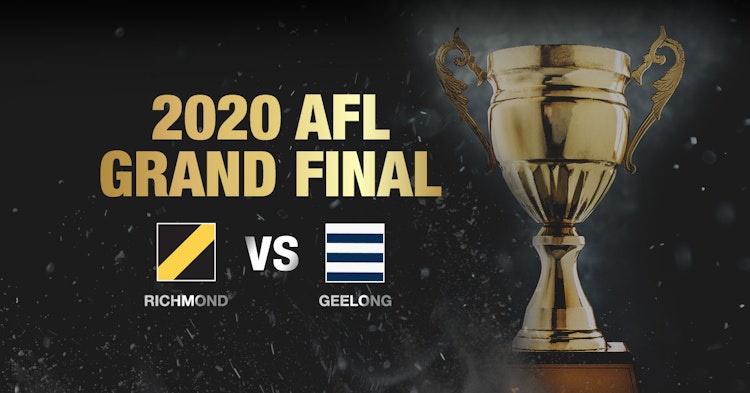AFL GRAND FINAL FEATURE: Can Patrick Dangerfield End Richmond’s Reign Of Terror
Last updated: Oct 22, 2020, 12:30AM | Published: Oct 21, 2020, 12:04AM
When Charlie Dixon smacked in his lead-shifting goal in the fourth quarter, it looked like things might finally be different again.
Outside of one chaotic, dream-like evening in 2018 when Mason Cox briefly became everything, this has been Richmond's league for four years now.
Beyond that loss to Collingwood, from 2017 to 2019 no team got closer than three goals of the Tigers in a final. In losing the qualifying final to Brisbane this year, any sense of invincibility about this year's Tigers was dented, and when Port grabbed the lead late on Friday night, Richmond's season began to teeter.
It was a strange preliminary final. It was played at a high level, but 'high level' these days is more about intensity and structure than smooth brilliance. High level isn't always great to watch.
This contest, though, was absorbing, and while Richmond never quite seemed on the ropes, they always seemed vulnerable. The manic pressure around the ball and general breathlessness killed any sense of flow, with the game's only flow being a consistent anti-flow.
For much of the night Port seemed bigger and stronger while the Tigers were quicker and cleaner. Both lacked a little in the departments where the other was thriving - for all their flaws and their strengths, Sam Powell-Pepper and Marlion Pickettat times seemed the best symbols of their teams. It was only in the fourth quarter, when Richmond finally got on top in close and started to dominate contested ball and clearances, that the match irrevocably turned.
In the end, the game played out almost perfectly to script.
RELATED: Shot Charting Trends: Richmond and Geelong's Goalkicking in 2020
Port, the challenger, threw everything at the champion, but lacked the composure and ruthlessness to finish them off. Too often they blazed away and wasted their territory advantage.
Too much at Port falls to the class of Robbie Gray and Connor Rozee to create in tight windows. Port's moment came at the end of the third quarter, and in that moment Travis Boak sprayed a set shot out on the full and Ryan Burton bizarrely scrubbed a kick while running into goal. All night, Richmond were more decisive with the ball, while the Power, for all their fury and intent, were caught double-clutching.
By the final term, Richmond had finally broken Port, even if the scoreboard never got comfortable. The Power looked helpless by the end, their forward entries purely in hope, and their confidence moving the ball shot. In the last quarter even Rozee, so composed and decisive in the beginning, was panicking handballs into the corridor to no one.
Port, like most, never had an answer for Dustin Martin. Early on, when Port had the ascendancy, Martin kept Richmond in touch - with a booming opening goal high into the night and a pair of contested marks against poor Darcy Byrne-Jones, as an outlet from defence and then inside 50.
Tom Lynch never exploded but his presence always loomed, a magnetic force in attack. Jack Riewoldt, outside of one pristine connection and goal in the first quarter, had a night of almosts, but that's what he is now - the leap is no longer as daunting, the hands not as sticky, and the hunting not as tiger-like.
A mortal Riewoldt is the first reason this Richmond might not be as imposing as in years past - but the sense that this side is inferior to the teams of 2017-19 might just be misguided noise. The Tigers are on a 13-3 run - in that time toppling Brisbane, the Bulldogs, West Coast, St. Kilda and Geelong all by 26+ points, as well as winning a final away to the minor premier. Their structures are muscle memory and as sound as ever. They're menacing on the break and Lynch is still the most frightening key forward in the game, while Martin is still the most frightening all-around vision in the game. Or perhaps, on a given day, the second most frightening all-around vision in the game.
RELATED: Damien Hardwick and Chris Scott Are The Grand Final's Biggest Figures
The day after Martin and the Tigers won their way through to the Grand Final, Patrick Dangerfield and the Cats went to the Gabba prepared for their own Richmond-Port Adelaide type struggle, and instead ended up with Geelong-Brisbane.
A lot of smaller, pinpointable things went wrong for Brisbane on the day but they were all just symptoms of the larger problem, which is that they were barely themselves and at times barely even at the ground.
There were warning signs early, with the Cats allowed to stream out of defensive 50 unimpeded, an easy chain of simple passes leading to a Tom Hawkins goal. All night Brisbane were brutal at stoppages - they only lost clearances by 3on the evening, but some of the losses were unbearably poor, with Geelong allowed free space around the ball time and time again. The Cats were able to control stoppages and dominate contested ball (+16) despite Dangerfield playing forward for much of the game. While everything was difficult for the Tigers against Port and doubt over the result always gnawed, nothing ever gnawed at Geelong, and nothing seemed to even intrude on Geelong's routine.
Geelong's giant midfield was too big for Brisbane's smaller bodies and their structures too disciplined and expert. They played like a team that knew exactly what to do and exactly where everything was, against a team playing in hope. By the end of it, the Cats would have 15 more scoring shots than Brisbane, and a 40-point marginwas a fair reflection of how the game always felt.
Like Martin always does, and like the greatest players always do, Dangerfield loomed over everything, though on this night his impact wasn't as emphatic as his spectre. It was fitting, though, that Dangerfield's powerful contested mark on the wing set up Zach Tuohy's sealer - and with that his ticket was punched to his first Grand Final.
RELATED: 2020 Brownlow Medal: Who was snubbed, and who got lucky in the votes?
It's an oddity, something you feel that you have to double check, that Dangerfield has never made a Grand Final until now.
This Geelong side has been such a finals fixture for so long, it's easy to assume, without really thinking, that they must have made the final day with Dangerfield once.
But it's never happened, and it's never really come close to happening, which is strange to say about a team that has made preliminary finals four of the past five years. In the 2016 preliminary final, Sydneyjumped the Cats and the game was never competitive. Adelaide destroyed them in 2017 and last year against the Tigers a handy half-time lead evaporated in minutes, and after that the result never felt in doubt.
Geelong's first half that night against Richmond will serve as a blueprint and a cautionary tale this week.
The Cats have two elements to their brilliance - the skill and patience of their kick-mark West Coast-style possession game, and the power of their big bodies around the contest. It was the latter element that took hold of Richmond in the preliminary final, with the Cats playing with unmatched fury, leaving Richmond dazed and rattled. It was magnificent, but also unsustainable. When Richmond gathered themselves, they ran at and over the Cats, and the game was quickly gone.
Richmond’s five-goal-to-one third quarter that night ended Geelong’s season, and Geelong’s chances on Saturday will hinge on how well they can absorb Richmond’s inevitable surges.
Geelong’s qualifying final loss to Port Adelaide feels ominous in this regard – when the Power made their charge in the third quarter, Geelong broke. They felt Port’s pressure when it was there and when it wasn’t, and were made to look old, slow and unsure. This, ultimately, is the concern – against a team with rapid, surging pace, the Cats can be tipped.
RELATED: Charting The AFL Premiership Clock: How Far Is Your Club From Its Next Flag?
At the same time, they have the tools to trouble Richmond.
Their skill and structure in moving the ball can take the sting out of Richmond’s counter-attacks, and their size and hardness around stoppages can allow them to control territory, much like Port Adelaide did for three quarters.
And then they have Dangerfield, maybe the only weapon in the league who can match Martin. The most obvious and captivating tactical element in the game will be whether Dangerfield and Martin play mostly in the middle or forward, or rather, whether Chris Scottand Damien Hardwick can get away with playing them mostly forward. If one side starts getting destroyed around the ball, the superstar shift to the middle will surely happen.
Martin, with his two premierships, two Norm Smith medals, and proven habit of eviscerating other sides in the biggest matches, is the more accomplished superstar, and for that reason this feels like Dangerfield’s Grand Final. Perhaps not his Grand Final to own, but the Grand Final that will, to some extent, define him. Martin is a legend and untouchable – Dangerfield is a champion without an exclamation mark.
Dangerfield will have more to carry. Bar Riewoldt, most of Martin’s cast is still at or around their peaks. Gary Ablett is still brilliant – his preliminary final a kind reminder of everything he’s done and can still do – and still capable of exquisite moments, like his lofted, stabbed chip goals on the run from outside 50, and Joel Selwood is still ferocious, but neither is close to their best anymore.
In last year’s preliminary final, Dangerfield was powerful, Tim Kelly was magnificent – the best player on the ground – and Selwood was excellent in a performance that might be beyond him now.
On Saturday, Dangerfield will likely need to replicate Kelly’s performance. The past three years Martin (twice) and Luke Shuey wrenched Grand Finals in the direction of their team through extraordinary force of will and ability. Maybe it will be easy, and Geelong will roll with or without Dangerfield igniting, but that seems wishful – unless Mason Cox is on the field, Richmond don’t seem capable of wilting.
There are no doubts over Dangerfield’s quality or where he stands in the game. Physically, he’s the most overwhelming midfielder of his era, a fearless, burrowing force, a relentless hunter of the ball, impossible to displace in the contest. His acceleration has declined, now only breathtaking instead of otherworldly. He’s an imposing mark overhead and his boot is a cannon, sometimes wayward, but always emphatic.
Dangerfield lacks Martin’s delicate class and vision but is more menacing around the ball. To see the two go head -to-head, next to each other and at opposite ends of the ground, with a bit of eternity at stake, will be a fitting and earned finale to a long, mad year.
Did you enjoy this article? Join our free mailing list to get the best content delivered straight to your inbox, or join the conversation by leaving a comment below or on the Stats Insider Twitter or Facebook page.



